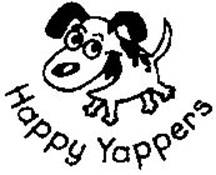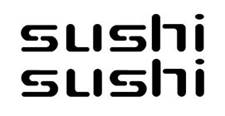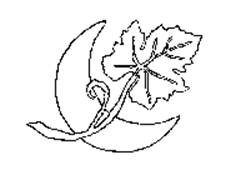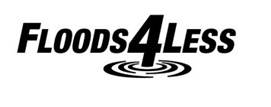If the description accurately describes some elements of the proposed mark but does not describe other elements, the USPTO will require amendment to complete the description only if the description will be published in the Trademark Official Gazette and included on the certificate of registration.
If the examining attorney determines that a description must be published in the Trademark Official Gazette and included on the registration certificate because it is necessary to clarify the proposed mark, the examining attorney needs to ensure that the description accurately addresses all significant elements of the mark. If the description is incomplete, the examining attorney must require amendment to ensure that the description is complete and accurate. The amendment may be done by examiner’s amendment, with the prior approval of the applicant.
The following is an example of an accurate but incomplete description where a corrected description must be published:

The mark consists of a hot dog in a bun with face, hands and feet wearing a grass skirt and grass hat.
Note: This description is incomplete because it does not reference the two beach umbrellas and palm trees behind the hot dog. It must be completed and published because it is necessary to clarify the mark.
Alternatively, if the examining attorney determines that the description need not be published, the examining attorney need not require the applicant to amend or withdraw an incomplete or inartfully worded description, so long as the description does not misdescribe those elements of the mark addressed in the description. In such a case, although the incomplete description remains part of the application record, it must not be published in the Trademark Official Gazette and included on the certificate of registration. The examining attorney must follow the procedure described in TMEP §808.03 for descriptions provided by the applicant that need not be published.
The following are examples of accurate but incomplete descriptions where a description need not be published:

The mark consists of a dog design.
Note: This description is incomplete because it does not include the wording in the mark. Unless it is amended to be complete, the description must not be published in the Trademark Official Gazette and included on the certificate of registration because it is not necessary to clarify the proposed mark.

The mark consists of the word "SUSHI" represented in stylized font.
Note: This description is incomplete because it does not include the second "SUSHI". Unless it is amended to be complete, the description must not be published.
If the examining attorney determines that the description misdescribes some element of the mark, such that the description is inconsistent with the mark shown on the drawing, the examining attorney must require the applicant to amend the description, even if the description will not be published. An inaccurate description must be corrected to accurately reflect the mark regardless of whether the description will be published. The amendment of the description may be done by examiner’s amendment, with the prior approval of the applicant.
The following are examples of inaccurate descriptions:

The mark consists of two overlapping triangles with two stars positioned below.
Note: This description is inaccurate because there are three stars in the mark.

The mark consists of the design of a single grape leaf with an attached vine in front of a full moon design.
Note: This description is inaccurate because the mark contains a crescent moon design.

The mark consists of the stylized wording "FLORIDA’S FOOD SERVICE" to the left of a stylized chef design.
Note: This description is inaccurate because the term "FLORIDA" includes an "’S" in the description. The change in the spelling of "FLORIDA" would not be considered an obvious misspelling because it is unclear whether the applicant intended for the mark to include the "’S". Either the mark or the description must be amended.

The mark consists of the stylized wording "FLOODS FOR LESS" with a pool of water under the wording.
Note: This description is inaccurate because the mark includes the numeral "4" rather than the word "FOR".

The mark consists of the stylized wording "C THREE REDUCT".
Note: This description is inaccurate because the mark includes the superscript number "3" following the letter "C" rather than the word "THREE". A proper description could refer to the numeral as "3" or "CUBED".
Generally, amending the description of the mark is liberally permitted, so long as the drawing supports the description. In rare cases where the amendment of the description constitutes a material alteration of the mark on the drawing or of the description filed with the original application, amendment will not be permitted. See 37 C.F.R. §2.72; In re Thrifty, Inc., 274 F.3d 1349, 61 USPQ2d 1121 (Fed. Cir. 2001). See TMEP §§807.14–807.14(f) regarding material alteration.
Particularly when a description is not included in the initial application, the examining attorney must ensure that the design coding is updated in accordance with the description, where appropriate and necessary. The examining attorney must ensure the design coding of all significant elements of the mark, specifically those that the examining attorney used in conducting a search. The examining attorney may update the "Design Code" field by making the appropriate entries in the Trademark database or by sending an email message to the internal TM Design Code Correct mailbox that contains instructions regarding the changes to be made.
If additional codes beyond those searched have been coded for a particular design, deleting the extra codes is unnecessary.
A statement that purports to limit a mark by excluding color(s) or other features that do not appear in a mark is not appropriate for inclusion in a description of a mark. Statements regarding any purported "exclusion" usually feature a limitation on the mark, often in an attempt to satisfy third parties that have infringement concerns. In some cases, the applicant has a written agreement with a potential opposer that addresses this issue. However, descriptions are solely to be used to describe the mark shown in the drawing and are not to be used to describe how the mark does not and will not appear. See TMEP §808.02.
Although these additional restrictive statements are uncommon, when they do appear the facts are generally as follows. The mark features a design and color is not claimed as a feature of the mark. The description of the mark is amended by the applicant to include a reference to a color or colors that the mark will not comprise. This type of statement is inappropriate and must be deleted from the description. For example, the following type of statement must not be included in a description of a mark: "The application and any registration resulting from the application exclude the color purple within or as part of the (design element) in the mark."
Thus, when the applicant has not made a color claim, the description of the mark must not mention color(s), because reference to color in the description of a non-color mark creates a misleading impression. TMEP §§807.07, 808.02.
Accordingly, the description may not be used to state any limitations as to how a mark does not and will not appear. Any such statements must be deleted from the description if it is determined that the description needs to be published. TMEP §§808.02, 808.03. Although applicants may include such restrictive statements in the application record, they are not appropriate for the registration certificate. If it is determined that the description does not need to be published, the description does not need to be amended to delete the restrictive statement unless some part of the description is inaccurate, in which case the restrictive statement must be deleted. TMEP §808.03(d).
An application to register a mark that includes non-English wording must include an English translation of that wording. 37 C.F.R. §2.32(a)(9). This requirement also applies to compound word marks comprised of two or more distinct words (or words and syllables) that are represented as one word, in which one or more of the words in the mark appears to be non-English wording that would clearly be perceived as a distinct word(s) within the compound. For example, if the mark is GRINÇANTCOMPUTERS, the commercial impression is that the mark is comprised of the words GRINÇANT and COMPUTERS. In such a case, the application must include a translation of the French word GRINÇANT, which means "creaking" in English. If, however, the combination either suggests a single word or conveys a commercial impression other than a mark comprised of two separate words, no translation of the non-English portion should be required. Thus, if the mark is FELIZCITY, the commercial impression is that the mark is a play on the word "felicity" and no translation of the Spanish term "feliz" (which means "happy" in English) is required. See TMEP §809.01 regarding the procedure for examining applications for marks with non-English wording that do not include an accurate translation.
Similarly, an application for a mark that comprises non-Latin characters must include a transliteration of those characters, and either an English translation or a statement that this portion of the mark has no meaning in English. 37 C.F.R. §2.32(a)(10). A transliteration is the phonetic spelling, in corresponding Latin characters, of the word(s) in the mark that are in non-Latin characters. Examples of statements translating and transliterating a word in non-Latin characters are as follows:
The non-Latin characters in the mark transliterate to Asahi and this means "Rising Sun" in English.
or
The non-Latin characters in the mark transliterate to Weidamei and this has no meaning in a foreign language.
If an application for a mark comprising non-English wording or non-Latin characters does not include an accurate translation and/or transliteration, the examining attorney must require the applicant to submit a statement of translation/transliteration. 37 C.F.R. §2.32(a)(9)–(10).
When an application or certificate of registration includes a translation, both the non-English wording and the English translation will appear in the records of the USPTO. See TMEP §809.03 regarding the publishing of the translation/transliteration statement in the Trademark Official Gazette and the inclusion of such statement on the registration certificate.
In a TEAS Plus application, if the mark includes non-English wording, the initial application must include an English translation of that wording. 37 C.F.R. §2.22(a)(15). If the mark includes non-Latin characters, the application must include a transliteration of those characters. 37 C.F.R. §2.22(a)(16). If the applicant does not meet these requirements, the applicant must pay a processing fee per class to have the application examined as a TEAS Standard application. See TMEP §819.01(m) for further information on translation and transliteration statements in TEAS Plus applications.
See TMEP §809.01(b) regarding the limited exceptions to the requirement to provide a translation of foreign wording in the mark.
In order to properly examine applications with non-English wording, the translation and transliteration of the non-English wording must be determined prior to performing a search of the mark. This is critical because the foreign equivalent of an English term may be regarded in the same way as the English term for purposes of determining descriptiveness, requiring a disclaimer, and citing marks under §2(d) of the Act (see, e.g., TMEP §§1207.01(b)(vi), 1209.03(g)).
Therefore, if there is no translation and/or transliteration in the initial application, the examining attorney should ascertain the meaning of non-English wording before searching the mark.
The examining attorney may obtain the meaning of non-English wording through sources such as foreign language dictionaries and search engines. The examining attorney may also consult the Trademark Librarian or the Translations Branch, as appropriate.
If research by the examining attorney, the Trademark Library, and/or the Translations Branch indicates that the term has no meaning or no clear and exact equivalent in a foreign language, although no inquiry regarding the meaning in a foreign language is necessary, the examining attorney has the discretion under 37 C.F.R. §2.61(b) to make such an inquiry. If no inquiry is made, the examining attorney must enter a Note to the File in the record indicating that the term was checked for a translation. In such cases, a statement regarding meaning must not be entered for publishing in the Trademark Official Gazette. See TMEP §809.01(a) regarding when an inquiry is made.
If the examining attorney determines the meaning of the non-English term(s), he or she must search the terms as they appear in the application, the transliterated terms, and the English translation(s) for the terms, as applicable. The examining attorney must also require (under 37 C.F.R. §2.61(b) ) that an accurate translation be made of record by the applicant using the researched translation or other accurate translation provided by applicant. If the applicant disputes a translation obtained through online resources, the examining attorney should supplement the record with evidence from the Trademark Librarian and/or the Translations Branch.
If the translation is provided or supplemented after the examining attorney has conducted a search for conflicting marks, the examining attorney must conduct a new search of the transliterated terms and/or the English translation(s) for the terms, as applicable.
If it is necessary to make a separate inquiry regarding the meaning of non-English wording, the examining attorney should provide the applicant with the correct format for a translation or transliteration statement. See TMEP §809.03. If a general inquiry is made regarding meaning under 37 C.F.R. §2.61(b) (i.e., whether the term has significance in the relevant trade, any geographical significance, or any meaning in a foreign language), the applicant’s response may not be in the correct format for the translation or transliteration statement. When an applicant’s response to an inquiry regarding the meaning of non-English wording includes statements that are not related to the translation or transliteration of such wording, the examining attorney must ensure that only statements regarding the translation or transliteration are entered in the relevant Trademark database using the appropriate format for inclusion on any registration certificate that may issue. See TMEP §809.03.
Similarly, if the applicant responds to an inquiry regarding non-English wording that "the mark has only trademark significance," or in some similar manner, the examining attorney must not enter the statement in that form in the Trademark database. Instead, the examining attorney must ensure that the statement is reformatted appropriately, to reflect that the wording has no meaning, in the relevant Trademark database for printing. See TMEP §809.03. It is not necessary to issue an examiner’s amendment in such cases.
There are three limited exceptions to the general rule requiring that all foreign wording be translated. See TMEP §§809.01(b)(i)–809.01(b)(iii).
It is generally unnecessary to provide a translation of a foreign term if the term appears in an English dictionary (e.g., croissant, fiesta or flambé). However, if a term that appears in the English dictionary appears in a mark as part of a foreign idiomatic phrase or other unitary expression, a translation of the idiomatic phrase or unitary expression is required. It would be illogical to break the phrase into its individual word elements and to translate only the individual words that do not appear in the English dictionary. Such a translation would serve no useful purpose because it would not convey the true commercial impression of the phrase.
Example: If the mark included the phrase "la fiesta grande," an appropriate translation would be "the great celebration" or possibly "the great fiesta." It would be inappropriate to translate only "la" and "grande." The ultimate goal is to provide a translation that reflects the true meaning of the non-English wording in the mark and the commercial impression made by the entire phrase. See TMEP §809.02 regarding equivalency in translation.
It is generally unnecessary to provide a translation of foreign articles or prepositions, such as "de," "le," "la," or "il," when combined with English terms, because their meaning is generally understood and, in this context, they are being used to convey an impression different from their foreign meaning. For example, in the mark "LE CASE," it is unnecessary to translate "LE."
It is generally not necessary to translate words from dead or obscure languages. Cf. Gen. Cigar Co. v. G.D.M. Inc., 988 F. Supp. 647, 660-61, 45 USPQ2d 1481, 1491-92 (S.D.N.Y. 1997) (finding applicant had no obligation to disclose that the term COHIBA for cigars means "tobacco" in the language of the Taino Indians in the Dominican Republic, because cigar smokers in the United States would not be aware of such a meaning). See TMEP §1207.01(b)(vi) and §1209.03(g) regarding the applicability of the doctrine of foreign equivalents to words from dead or obscure languages. The determination of whether a language is "dead" must be made on a case by case basis, based upon the meaning that the term would have to the relevant purchasing public.
Example: Latin is generally considered a dead language. However, if there is evidence that a Latin term is still in use by the relevant purchasing public (e.g., if the term appears in news articles), then a Latin term is not considered dead. The same analysis should be applied to other uncommon languages.
The translation that should be relied upon in examination is the English meaning that has significance in the United States as the equivalent of the meaning in the non-English language. The following are examples of equivalency in translation:
If any question arises as to the proper translation of a mark, the examining attorney may consult the Trademark Library or Translations Branch of the USPTO. The determination of the appropriate translation often requires consideration of the meaning in relation to the goods and/or services. See TMEP §1207.01(b)(vi) regarding the use of the doctrine of foreign equivalents in determining likelihood of confusion under 15 U.S.C. §1052(d), §1209.03(g) regarding the doctrine of foreign equivalents in determining questions of descriptiveness under 15 U.S.C. §1052(e)(1), and §1211.01(a)(vii) regarding the doctrine of foreign equivalents in determining whether a term is primarily merely a surname under 15 U.S.C. §1052(e)(4).
Generally, non-English wording in a mark must be translated into English and the translation (and transliteration, if applicable) must be published in the Trademark Official Gazette and included on the registration certificate. See TMEP §§809.01–809.01(a) regarding when a statement that a term has no meaning in a foreign language should be published.
Sometimes, translations that are not precise, or that give a variety of meanings, are placed in the record. While all possible translations, and discussions relative to meaning, are useful for informational purposes, not all such matter is appropriate for publishing in the Trademark Official Gazette or inclusion on the certificate of registration. Only a translation that is the clear and exact equivalent (see TMEP §809.02) should be published. This normally means only one translation, because the existence of a variety of alternative translations, or the necessity of including explanatory context, usually indicates lack of a clearly recognized equivalent meaning.
If an applicant submits a translation that is too verbose or vague to be appropriate for printing, the examining attorney must require a clear, concise translation. The transliteration of non-Latin characters, if any, must be included in the statement to be published. If necessary, the examining attorney should rewrite the statement via an examiner’s amendment and ensure that the Trademark database is updated accordingly.
Example: The translation statement contains the proper translation, but the statement is not suitable for printing because it is too wordy. If the examining attorney is only "reformatting" the applicant’s statement without changing the substance, the examining attorney should rewrite the translation statement into a simple, clear statement as to meaning, issue a "no-call" examiner’s amendment (see TMEP §707.02), and ensure that the Trademark database is updated accordingly.
Example: The translation statement is vague or is otherwise in need of clarification in order for the statement to be clear and concise. The examining attorney should contact the applicant and suggest a simple, clear statement. If the applicant agrees to amend the translation statement as suggested, the examining attorney should issue a regular examiner’s amendment, and ensure that the Trademark database is updated accordingly. If the applicant and examining attorney cannot agree on wording, the examining attorney must issue an Office action to resolve the issue.
One of the following statement formats should be used, as appropriate:
The English translation of the word "__________ " in the mark is "__________" .
The English translation of the __________ word "__________" in the mark is "__________" .
The English translation of "__________" is "__________" .
The wording "__________" has no meaning in a foreign language.
The non-Latin characters in the mark transliterate to "__________" and this means "__________" in English.
The __________ characters in the mark transliterate to "__________" and this means "__________" in English.
The non-Latin characters in the mark transliterate to "__________" and this has no meaning in a foreign language.
All information in the "Translation" and "Transliteration" fields in the application record will automatically be published in the Trademark Official Gazette and included on the certificate of registration. Accordingly, the examining attorney must ensure that the translation or transliteration is entered into the Trademark database. When an examining attorney determines that a translation should not be published because it is unnecessary, the examining attorney must ensure that the translation is deleted from the Trademark database, and enter a Note to the File in the record indicating that the translation has been deleted. The document containing the information deleted from the Trademark database will remain of record for informational purposes. See TMEP §817 regarding preparation of an application for publication or registration.
An application under §1 or §44 of the Trademark Act must include a filing fee for each class of goods or services. 15 U.S.C. §§1051(a)(1), 1051(b)(1), and 1126(a).
The required filing fee for at least one class of goods or services must be received before an application can be given a filing date. 37 C.F.R. §2.21(a)(5).
An applicant has two filing options:
The current application filing fee amounts are available online at https://www.uspto.gov/trademark/trademark-fee-information.
In limited circumstances, an applicant may file a paper application at the highest per class filing fee set forth in 37 C.F.R. §2.6(a)(1)(i). See TMEP §301.01 regarding the limited exceptions when paper submissions may be permitted. Note: TEAS Standard or TEAS Plus applications that are downloaded, printed, and mailed to the USPTO are considered paper applications.
See TMEP §1403.02(c) and §1403.05 for further information about fees in multiple-class applications.
See also TMEP §§405–405.06 regarding payment of fees to the USPTO and §§202.03(a) and 202.03(a)(i) regarding the processing of applications in which a check submitted as the application filing fee is returned unpaid, or an electronic funds transfer or credit card payment is refused or charged back by a financial institution.
Section 66(a) applications. The filing fee for a §66(a) application is sent to the USPTO by the IB, pursuant to the provisions of the Madrid Protocol and the Regulations Under the Protocol Relating to the Madrid Agreement Concerning the International Registration of Marks. See 37 C.F.R. §2.6(a)(1)(ii). The examining attorney must not require additional fees during examination.
A filing fee is required for each class in a multiple-class application under §1 or §44 of the Trademark Act. 37 C.F.R. §2.86(a)(2), (b)(2). The USPTO has established the following policy to ensure the collection of application filing fees from all applicants.
In an application under §1 or §44, if the applicant has specifically authorized the USPTO to charge any additional fees to a deposit account, the examining attorney should ask the LIE to charge the fees, and proceed with examination of the application on the merits. If the applicant has not provided a specific authorization to charge an account, the examining attorney may attempt to contact the applicant to secure a written authorization to charge fees to a credit card or deposit account by email.
An authorization to charge a fee to a deposit account must be made in a written document signed and submitted by an authorized person. It cannot be entered by examiner’s amendment unless the record already contains a written authorization, signed and submitted by someone who is authorized to charge fees to the account. See TMEP §405.03 regarding deposit accounts.
If the examining attorney is able to secure a written authorization to charge fees to a credit card or deposit account, the examining attorney should have the LIE charge the necessary fees to the credit card or deposit account and proceed with examination. See TMEP §§810, 1403.02(c), and §1403.05 regarding the amount of the fee for adding classes to an application.
If an authorization to charge fees has not been provided and the examining attorney is unable to secure one, the examining attorney must issue a written Office action noting the deficiency and requiring either payment of the fees or deletion of classes. This policy applies to any application under §1 or §44 of the Trademark Act in which the applicant specifically delineates more than one class and the applicant has paid the fee(s) for less than all the classes. The delineation may be by indicating class numbers or any other means demonstrating a clear intention to seek registration in multiple classes.
In cases involving insufficient fees, the examining attorney may simply act on the merits of the application and require the additional fees. However, for efficiency in some circumstances, the examining attorney may issue an Office action advising the applicant that action on the merits of the application is deferred pending payment of missing fees or deletion of classes. Before issuing a letter deferring action until additional fees are paid, the examining attorney must consult with the managing attorney or senior attorney.
The filing fee for a §66(a) application will be sent to the USPTO by the IB, pursuant to the provisions of the Madrid Protocol and the Regulations Under the Protocol Relating to the Madrid Agreement Concerning the International Registration of Marks. The examining attorney must not require additional fees during examination. The classification in a §66(a) application may not be changed and additional classes may not be added. 37 C.F.R. §2.85(d). See TMEP §1401.03(d) for further information regarding classification in a §66(a) application.
Only money paid by mistake or in excess (when a fee is not required by the statute or rules, or is not required in the amount paid) may be refunded. 37 C.F.R. §2.209(a). A mere change of purpose after the payment of money does not entitle a party to a refund. Id. For example, if an applicant deletes a class from an application, or withdraws an application, the applicant is not entitled to a refund.
The filing fee for an application that is denied a filing date will be refunded. After an application has been given a filing date and processed, the filing fee will normally not be returned. However, if an examining attorney erroneously requires a fee, the USPTO will refund any fee submitted in response to the erroneous requirement.
If the examining attorney determines that an applicant is entitled to a refund, he or she must submit the necessary information via a "Fee Charges and Refunds" request form.
If the examining attorney is uncertain as to whether a refund is appropriate, he or she should discuss the situation with his or her managing attorney or senior attorney.
See TMEP §405.04 for additional information about processing refunds.